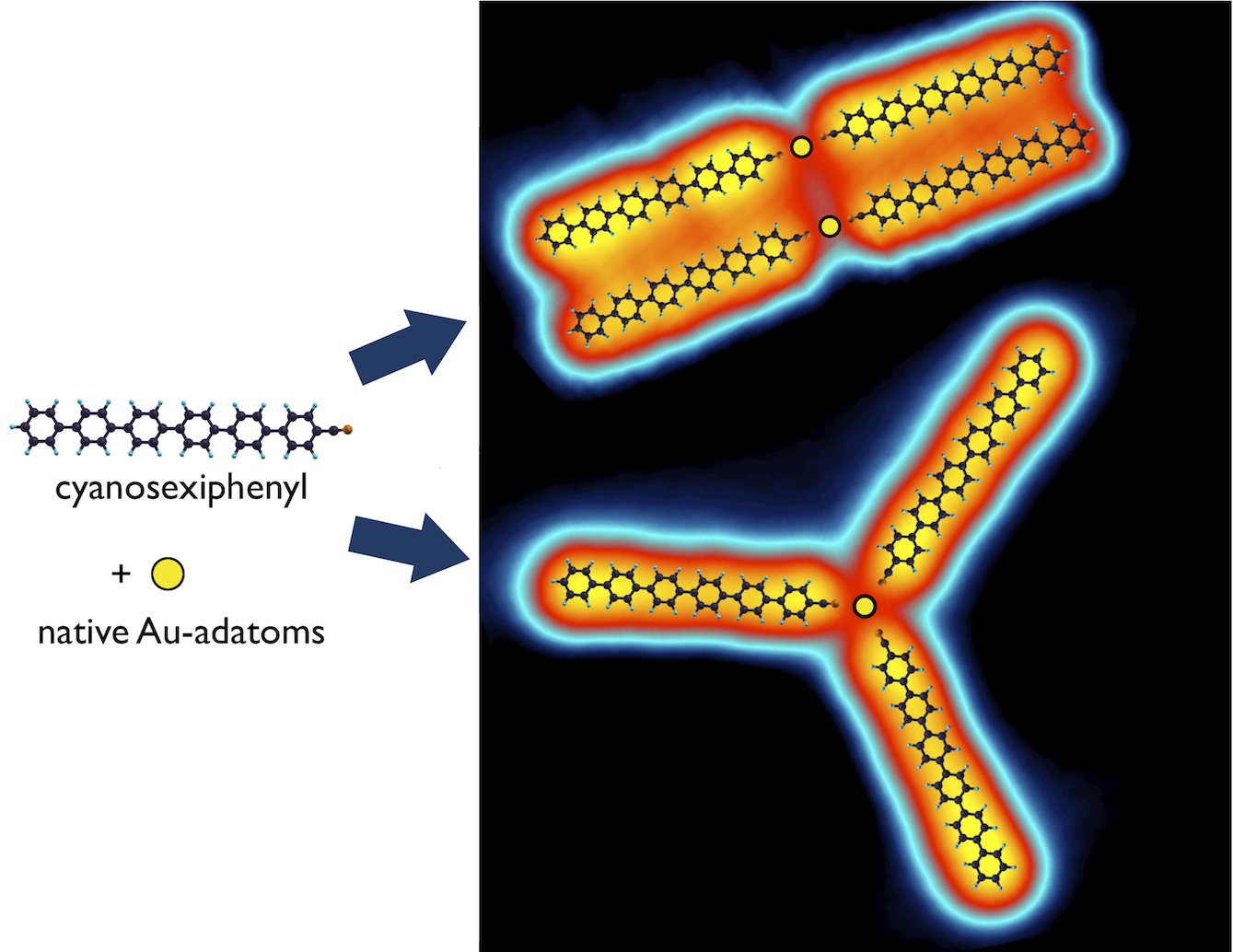The adhesive and frictional response of an AFM tip connected to a substrate through supramolecular host-guest complexes is investigated by dynamic Monte Carlo simulations. Here, the variation of the pull-off force with the unloading rate recently observed in experiments is unraveled by evidencing simultaneous (progressive) breaking of the bonds at fast (slow) rates. The model reveals the origin of the observed plateaus in the retraction force as a function of the tip-surface distance, showing that they result from the tip geometrical features. In lateral sliding, the model exhibits a wide range of dynamic behaviors ranging from smooth sliding to stick-slip at different velocities, with the average friction force determined by the characteristic formation/rupture rates of the complexes. In particular, it is shown that for some molecular complexes friction can become almost constant over a wide range of velocities. Also, we show the possibility of exploiting the ageing effect through slide-hold-slide experiments, in order to infer the characteristic formation rate. Finally, our model predicts a novel ‘‘anti-ageing’’ effect which is characterized by a decrease of the static friction force with the hold time. Such an effect is explained in terms of enhancement of adhesion during sliding, especially observed at high driving velocities.

The adhesive and frictional response of an AFM tip connected to a substrate through supramolecular host-guest complexes is investigated by dynamic Monte Carlo simulations. Here, the variation of the pull-off force with the unloading rate recently observed in experiments is unraveled by evidencing simultaneous (progressive) breaking of the bonds at fast (slow) rates. The model reveals the origin of the observed plateaus in the retraction force as a function of the tip-surface distance, showing that they result from the tip geometrical features. In lateral sliding, the model exhibits a wide range of dynamic behaviors ranging from smooth sliding to stick-slip at different velocities, with the average friction force determined by the characteristic formation/rupture rates of the complexes. In particular, it is shown that for some molecular complexes friction can become almost constant over a wide range of velocities. Also, we show the possibility of exploiting the ageing effect through slide-hold-slide experiments, in order to infer the characteristic formation rate. Finally, our model predicts a novel ‘‘anti-ageing’’ effect which is characterized by a decrease of the static friction force with the hold time. Such an effect is explained in terms of enhancement of adhesion during sliding, especially observed at high driving velocities.
